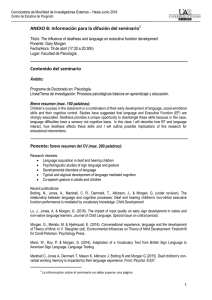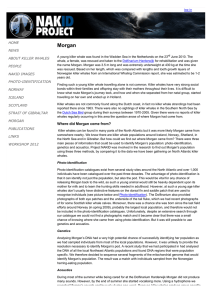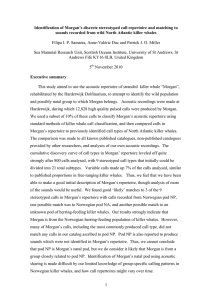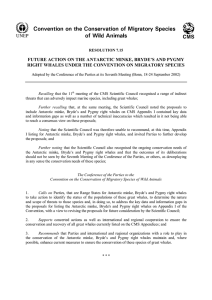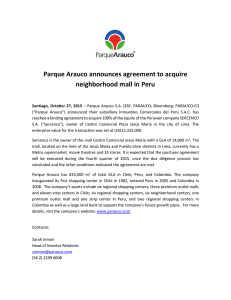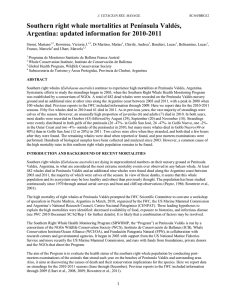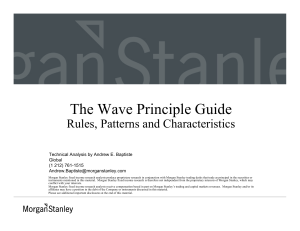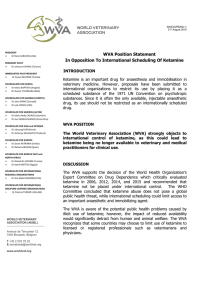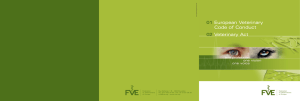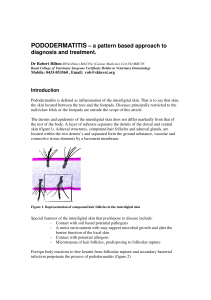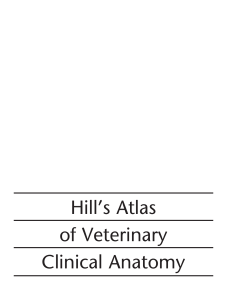Health assessment of Morgan
Anuncio
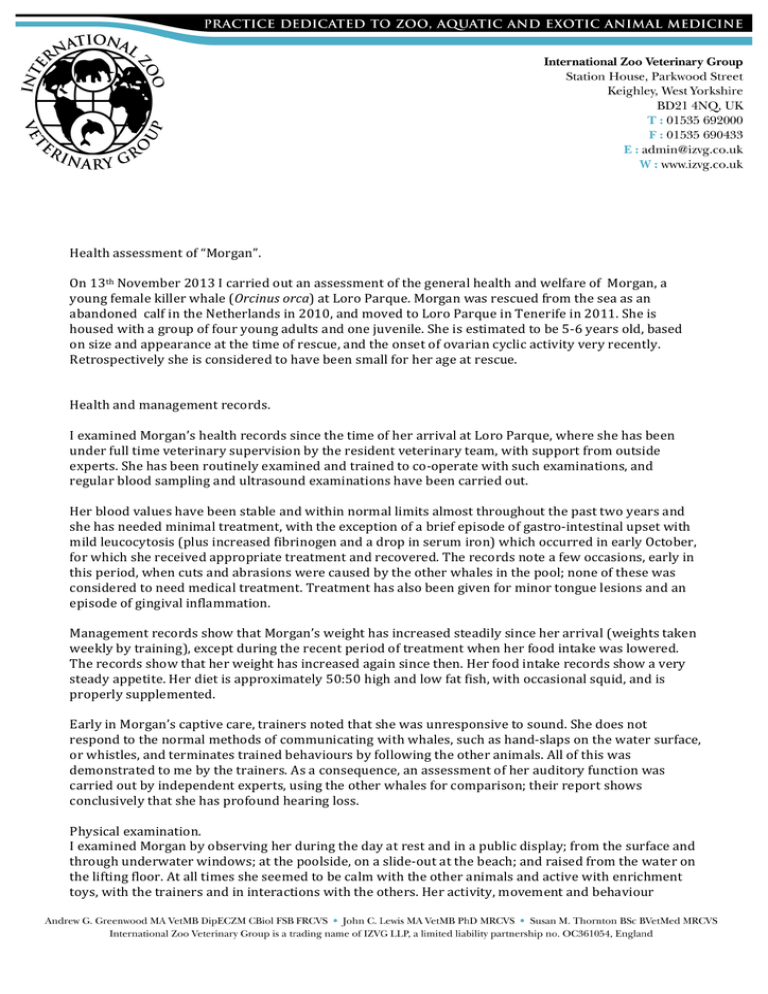
Health assessment of “Morgan”. On 13th November 2013 I carried out an assessment of the general health and welfare of Morgan, a young female killer whale (Orcinus orca) at Loro Parque. Morgan was rescued from the sea as an abandoned calf in the Netherlands in 2010, and moved to Loro Parque in Tenerife in 2011. She is housed with a group of four young adults and one juvenile. She is estimated to be 5-­‐6 years old, based on size and appearance at the time of rescue, and the onset of ovarian cyclic activity very recently. Retrospectively she is considered to have been small for her age at rescue. Health and management records. I examined Morgan’s health records since the time of her arrival at Loro Parque, where she has been under full time veterinary supervision by the resident veterinary team, with support from outside experts. She has been routinely examined and trained to co-­‐operate with such examinations, and regular blood sampling and ultrasound examinations have been carried out. Her blood values have been stable and within normal limits almost throughout the past two years and she has needed minimal treatment, with the exception of a brief episode of gastro-­‐intestinal upset with mild leucocytosis (plus increased fibrinogen and a drop in serum iron) which occurred in early October, for which she received appropriate treatment and recovered. The records note a few occasions, early in this period, when cuts and abrasions were caused by the other whales in the pool; none of these was considered to need medical treatment. Treatment has also been given for minor tongue lesions and an episode of gingival inflammation. Management records show that Morgan’s weight has increased steadily since her arrival (weights taken weekly by training), except during the recent period of treatment when her food intake was lowered. The records show that her weight has increased again since then. Her food intake records show a very steady appetite. Her diet is approximately 50:50 high and low fat fish, with occasional squid, and is properly supplemented. Early in Morgan’s captive care, trainers noted that she was unresponsive to sound. She does not respond to the normal methods of communicating with whales, such as hand-­‐slaps on the water surface, or whistles, and terminates trained behaviours by following the other animals. All of this was demonstrated to me by the trainers. As a consequence, an assessment of her auditory function was carried out by independent experts, using the other whales for comparison; their report shows conclusively that she has profound hearing loss. Physical examination. I examined Morgan by observing her during the day at rest and in a public display; from the surface and through underwater windows; at the poolside, on a slide-­‐out at the beach; and raised from the water on the lifting floor. At all times she seemed to be calm with the other animals and active with enrichment toys, with the trainers and in interactions with the others. Her activity, movement and behaviour appeared quite normal. She responded actively to the presence of trainers and was calm with strangers. When left unattended she showed no sign of repetitive or other abnormal behaviour. Morgan was in excellent body condition, currently weighed 1575kg and measured 4.74m in length. Her dorsal fin was vertical and rigid, and her skin was smooth and without any sign of fresh or recent wounds or lesions, with the exception of a 4cm shallow cut on her underside which appeared to be the result of contact with something in the pool (such as a gate) rather than a bite from another animal. She carried numerous fine linear scars from previous interactions with other whales, but these were all long since healed. None of these scars had caused depigmentation, indicating that the wounds had been superficial. Her eyes were clear and unmarked, her blowhole was clean and without discharge. On auscultation her lung and heart sounds were clear and normal. Morgan’s front teeth were partially worn, seven at the front of the right mandible (lower jaw), and three on the left. Pulp exposure was present in three of these, one active and the others with the pulp deteriorated. None of the maxillary teeth (upper jaw) was affected. This is a result of her rubbing the teeth against hard objects or the sides of the pool, and was present to some degree in some of the other animals (and in most captive whale groups I have seen). Conclusion. In general, with the exception of her hearing deficit, Morgan’s physical condition and health are excellent. From what I was able to see from her behaviour, her psychological health is also good. I was satisfied that she was being given the best of care. Qualifications and experience. I am a qualified veterinary surgeon, with the degrees of MA, VetMB from Cambridge, and Fellowship of the Royal College of Veterinary Surgeons. I hold the European Diploma in Zoological Medicine and am a European and RCVS recognised Specialist in Zoo and Wildlife Medicine. I am also a Fellow of the Society for Biology and a Chartered biologist. I am a Past President of the European Association for Aquatic mammals. I have worked in the field of marine mammal medicine for 40 years, including continuous responsibility for killer whales. I have been veterinary consultant to Loro Parque since 1986, but I am not actively involved in the care of this group of whales, so am able to take a professionally independent view. Andrew G. Greenwood MA VetMB DipECZM CBiol FSB FRCVS. 19 November 2013.
